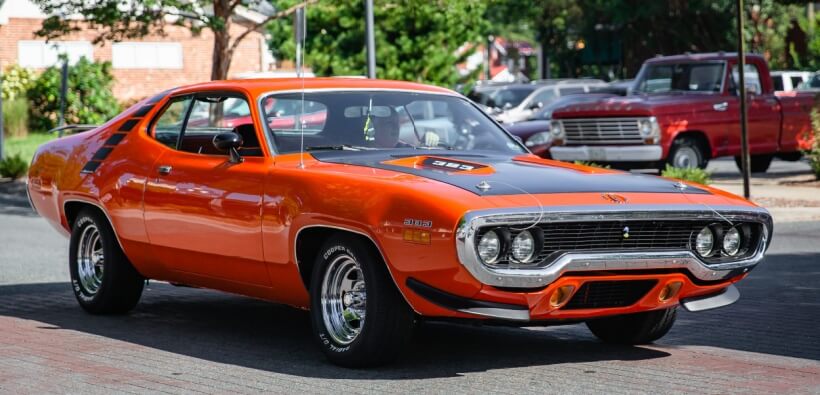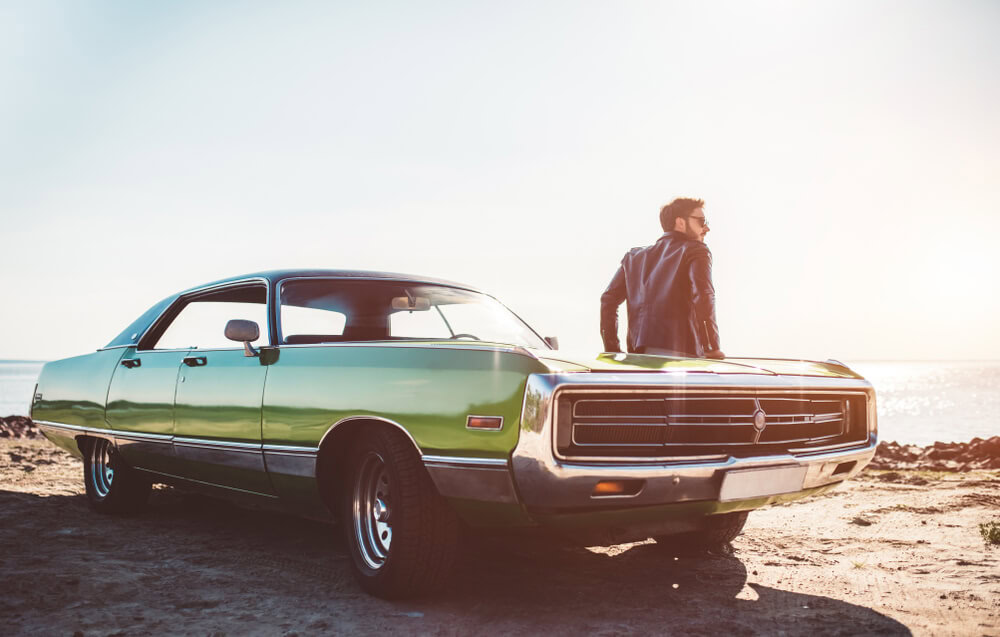Timeless Rides: How to Identify a Classic Car for Insurance

What if you were not giving one of your most important investments the protection it deserves?
If you have taken the time to buy, repair, and otherwise restore a vintage vehicle, you will benefit by protecting it with classic car insurance. However, many drivers skip this coverage because they think their existing auto policy will take care of it. Other drivers do not pick up this specialized policy because they are not clear on whether their vehicle even qualifies for this coverage.
Just when does a car become a classic, and how can you tell when you need to purchase California classic car insurance for your vintage ride? Keep reading to discover the answers.
The Age Factor in Classifying Classic Cars
On paper, the simplest way to identify whether you have a vintage car is its age. In practice, however, this method of determining an automobile’s status can be more difficult than it may sound.
For example, the generally accepted wisdom is that a vehicle needs to be at least 25 years old to be considered a classic. If you are a California driver, then being at least 25 years old is one of the major requirements for the car to be considered “historic” by the state.
However, that is not the only qualification California and other states require. Just because you have an old vehicle kicking around does not mean it qualifies for classic status or that it will impress anyone at the next car show. Below, you will find important information about other criteria for this specialized kind of coverage.
Beyond Age: Other Factors Defining a Classic Car
Simply being at least 25 years old does not automatically qualify a vehicle for vintage car insurance. In California, the vehicle must have been manufactured after 1922 for you to get a historical license plate. That is not a real impediment for most modern drivers, but it does rule out vehicles that might more properly be considered vintage.
In some cases, carriers will not offer this type of coverage for a vehicle unless it has some kind of historic or cultural significance. Exactly how this is defined can vary from carrier to carrier, but in practice, this usually means the vehicle is primarily used at various exhibitions (which are one of the best ways to show off your restored classic car) designed to highlight automotive history. In other words, it is not just an old vehicle you are using as a daily driver.
There are a few more criteria your vehicle must meet before it can receive classic car coverage. For example, the automobile will need to be in good working condition, should be worth more than the average car, and the driver needs to be at least 25 and own another vehicle for daily use. And, of course, the vehicle will not qualify for coverage if you are using it for street races.
Classic vs. Antique vs. Vintage Cars: What is the Difference?
When you talk about older automobiles with enough people, you will hear several terms that are sometimes used interchangeably. For example, some may call their vehicle “classic,” and others might use terms such as “antique” or “vintage.” There are things you should know about classic and antique cars and it can be enough to make your head spin, especially if you are relatively new to this scene.
What is the difference between these various terms? First, you should know that in the eyes of insurance companies, these terms really are interchangeable. As long as you meet the aforementioned state guidelines to qualify for classic car insurance, agents are not going to refuse your car coverage based on a technicality.
That being said, knowing the difference in these various terms can help you “talk shop” with other vintage vehicle enthusiasts. Speaking of that label, “vintage” cars are typically those manufactured somewhere between 1919 and 1930 (though as noted before, vehicles made before 1922 may not qualify for coverage).
Meanwhile, the term “antique” typically refers to vehicles at least 45 years old and manufactured in or before 1975. Finally, the term “classic” typically refers to vehicles over 20 years old.
Unlocking the Benefits of Specialized Insurance
The criteria above can help you learn more about how to classify your vehicle as well as whether or not it meets the state criteria for vintage car insurance. However, that information alone does not answer the bigger question for vintage drivers: Why is it so important to get specialized coverage for these older vehicles?
As you might imagine, there are as many answers to that question as there are benefits. To get a better idea of what this unique policy can do for you and your vintage ride, check out the breakdown of special benefits below.
Tailored Protection for Timeless Treasures
The biggest reason for getting antique automobile insurance is right there in the name. This is a policy that was designed to protect your vintage ride. As such, it takes into consideration the different threats your vehicle might face and provides the protection you need for some very special circumstances.

All of this goes back to the very need for insuring anything. Your vintage ride is something you have spent plenty of time, money, and elbow grease restoring (speaking of which, make sure you are familiar with the essential owner’s guide to car maintenance). After making such an investment, it is important to give the vehicle the protection that it deserves.
When Standard Insurance Just Is Not Enough
The biggest mistake when it comes to classic car insurance is assuming standard coverage will be enough. However, keep in mind that standard coverage is designed to pay up to the current market value of the vehicle, which is usually not enough to replace a vehicle with many expensive restorations.
With classic car insurance, you can pay to repair or replace a vintage vehicle that may have grown in value over time. In short, you get the collector car insurance needed to protect a collector’s item and not just another vehicle.
Roadside Assistance
One of the underrated features of classic car coverage is that it provides you with roadside assistance when you need it the most. Whether you are coming to or from an exhibition or just broke down on the highway while taking your antique automobile for a spin, you can get the assistance needed to keep you and your ride safe.
Protection Even When You Are Away
When it comes to your daily driving vehicle, you may or may not have comprehensive insurance on it. This coverage pays to protect your vehicle when you are not behind the wheel, which is a great way to protect your automobile from threats like falling tree limbs during high winds.
You may or may not find that protection necessary for your daily driver. With an antique car, however, there is always the worry something could happen to it at an exhibition when you walk away. Fortunately, vintage automobile coverage protects your ride even when you are not driving, which should offer you some major peace of mind at your next show.
Frequently Asked Questions About Classic Car Insurance
Still on the fence about getting this special coverage for your vintage vehicle? Below, you will find answers to the most commonly asked questions about classic coverage. These answers should help you finalize your decision.
Can I Just Use My Regular Insurance for a Classic Car?
As noted above, standard car insurance is not designed to protect vintage vehicles. The main issue is that most standard policies do not offer enough financial protection for a valuable vintage car. If you have a vehicle that would be very expensive to repair or replace, then it deserves the financial protection tailor-made for just this scenario.
Is It Hard to Qualify for Classic Car Insurance?
While the exact requirements vary from carrier to carrier, it is generally easier to qualify for vintage coverage than you might think. Because this coverage is offered by so many different carriers, you can always maximize your chances by shopping around until you get the most competitive quotes from insurers who think your automobile qualifies.
Is Classic Car Insurance Overly Expensive?
In many cases, coverage is less expensive than standard policies. The reason for this is simple: You are less likely to be on the road very long with a vehicle you mostly take to exhibitions and other special shows. Less time on the road means less risk of an accident, and carriers will offer you a lower premium as a result.
How Does Classic Car Insurance Work?
With standard auto insurance, the insurance agency determines your car’s worth by the actual cash value of your vehicle. With classic car insurance, your insurer and you will come to an agreement about how much your vintage beauty is worth. Your policy will cover that amount.
Protect Your Classic Car Today
Now you know how to identify a classic car for insurance. But do you know where to find the carrier ready to offer the best prices on the protection your vehicle deserves?
At InsureOne, we are genuine car enthusiasts who understand the value of a vintage ride. When you are ready for the peace of mind that comes from fellow automobile lovers having your back, come get a quote online. Of course, you can also pick up the phone and give us a quick call at 800-836-2240. Finally, feel free to come find an InsureOne office near you.


